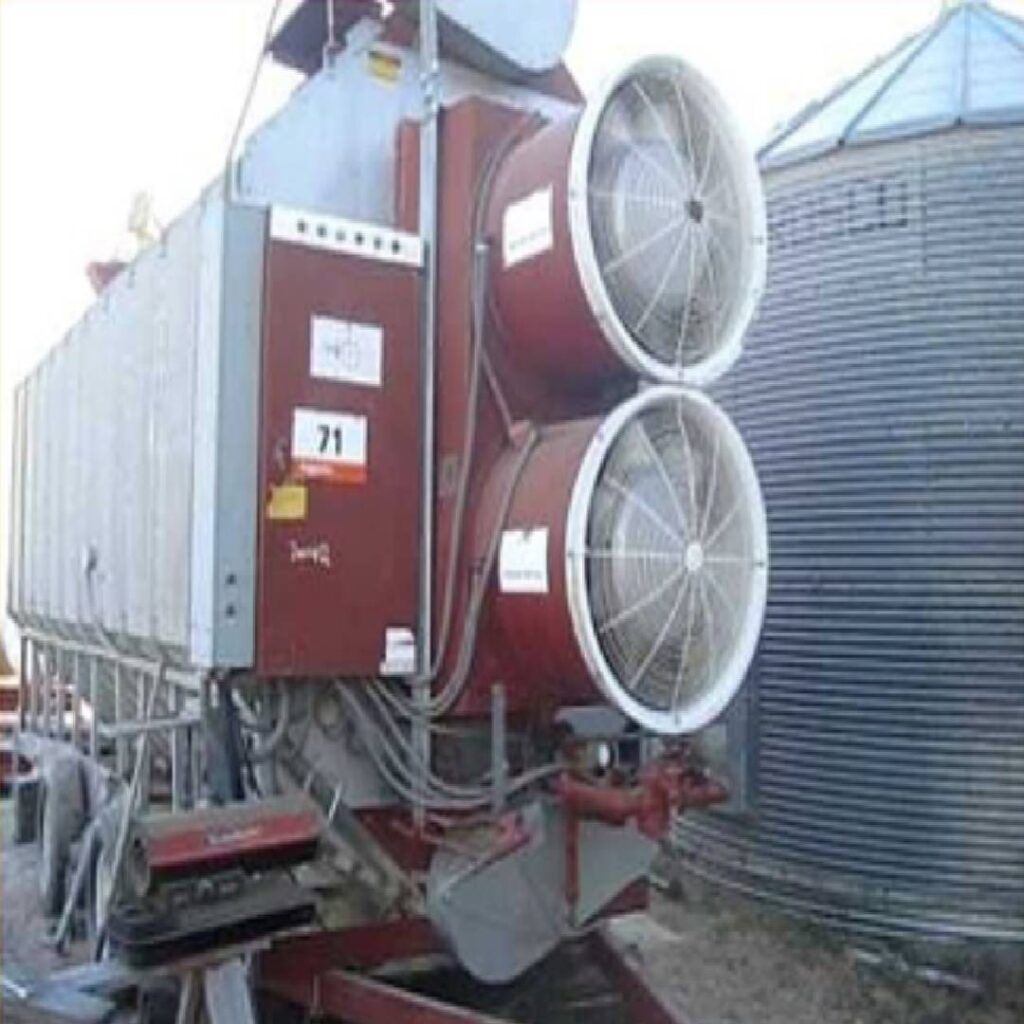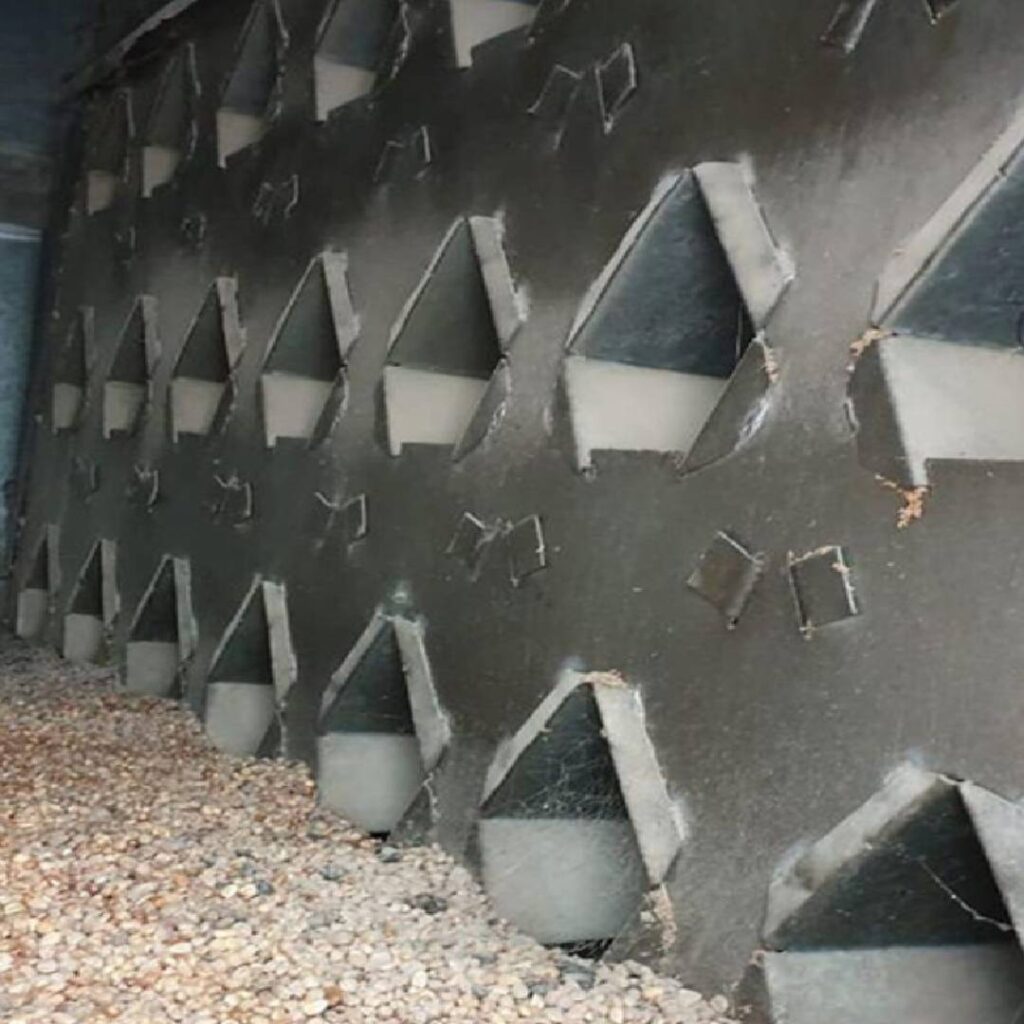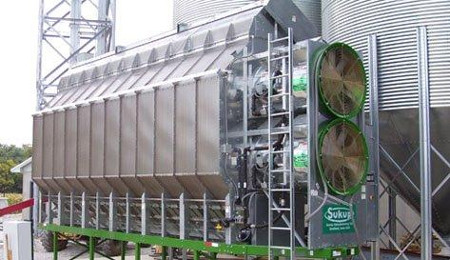Corn Dryer with Production Capacity from 10 to 70 Ton/Hour
Drying begins in the bottom of the container, the first area in contact with the air. Dry air is introduced by a fan through a layer of moist grain, typically 1 to 2 feet thick, known as the drying zone. This drying zone moves from the bottom of the container upwards. By the time it reaches the top layer, the grain is dry. The grain below the drying zone maintains moisture content in equilibrium with the drying air, making it safe for storage, while the grain above still requires drying. Air is forced out of the ventilation box.
Grain can be safely stored if its moisture content is below 14%, and it is protected from insects, rodents, and birds. The following chart details the recommended moisture content for safe storage.
- Mold, discoloration, respiration loss, insect damage, moisture absorption: Can occur if stored for 6 weeks to a few months.
- Insect damage: Grain can be stored for 8 to 12 months.
- Loss of viability: Seeds can be stored for over a year, but viability decreases over time.
Grain moisture content is linked to relative humidity and ambient air temperature. The equilibrium moisture content is the point at which the grain neither loses nor gains water when in contact with drying air. The ultimate moisture content of the grain corresponds to the humidity in the drying air. Lower relative humidity indicates drier air with a greater potential for moisture absorption. Typically, a decrease in relative humidity raises air temperature by approximately 20 degrees.
Hot air can be used in the grain drying process, accelerating moisture transfer within the kernel and evaporating surface moisture. However, high kernel temperatures can damage the grain. Generally, kernel temperatures should be lower than air temperatures. Different types of corn require different temperatures; for seed corn, the maximum is 111°F, while for livestock feed corn, it is 180°F.
Ventilation refers to the process of moving air through the grain. Airflow is measured in cubic feet per minute (CFM). In the grain drying process, drying time largely depends on ventilation rates. Without sufficient airflow, grains may spoil before they are fully dried. Fans are used to circulate air through the grains.
Grain Ventilation Rates (CFM/BU) and Applications
- 1/50 to 1: Quality maintenance
- 1 to 3: Natural air drying
- 2 to 12: Hot air drying
- 50 to 150: Batch or continuous flow dryers
- ~400: Fluidized condition









